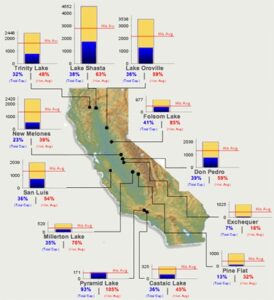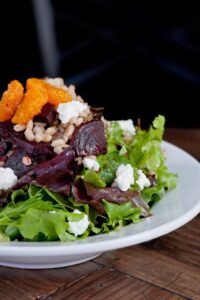 Firebaugh is a small town on the west side
Firebaugh is a small town on the west side
of California’s San Joaquin Valley. As one of the
oldest continuously populated settlements in the Valley,
it boasts a rich history of Native American and Mexican
culture, gold rush prospectors, Italian, Portuguese and
Dust Bowl farm workers. Throughout its history
Firebaugh has remained a hub of activity in the Valley
and has weathered the changes seen by its inhabitants
since the early 1800s.
Originally called Las Juntas, or
“The Meeting,” the area was inhabited by the Kahwatchwah
people of the larger Yokut tribe of Native Americans.
It was settled in 1853 and renamed by Andrew Davidson
Firebaugh. His venture was to ferry prospectors across
the wide San Joaquin River into the gold mining region
of the Sierra Nevada mountains.
 Over the years agriculture took
Over the years agriculture took
center stage in Firebaugh and helped shape the community
as it is known today. What has remained is a dedication
to hard work that has been the hallmark of Firebaugh
residents since its earliest days.
Today Firebaugh consists of about
6,000 residents, most of whom work in agriculture or its
associated industries, such as transportation and food
processing. According to Firebaugh City Manager Jose
Ramirez, the San Joaquin River is still the jewel of the
community. “People from Firebaugh and the surrounding
communities come here to take part in many activities in
or around the river. It has given this city an
advantage.”
Proof of this can be seen in the
recently completed Andrew Firebaugh Historic Park and
Interpretive Learning Center. The park includes the
remains of an 1885 center swing draw bridge and the
western end of the Firebaugh Ferry Crossing. This
crossing doubled as a steamboat landing and a stop on
the Butterfield Overland stage route.
While Ramirez is confident that
agriculture is and will continue to be the backbone of
the community, he concedes that the town faces growth
from home buyers seeking an affordable place to live and
a community that has remained a small town at heart.
The town is expecting to see 1,000 new homes in the next
two to three years, a result of people being pushed from
Watsonville, Castroville, Los Banos and southern Bay
Area communities. Firebaugh’s first Starbucks is still
a year or two away.
 What drives business, according to
What drives business, according to
Ramirez, continues to be water. Without it the farms
don’t produce, the processing facilities don’t have raw
food products to turn into sauces and pastes and the
local businesses, such as car dealers and restaurants,
don’t have customers to buy their products.
“How could the farms grow 15,000
acres of cantaloupes if the water isn’t there?” asked
Ramirez. “People have to see the nexus between farm
water and the other jobs in the community.”


